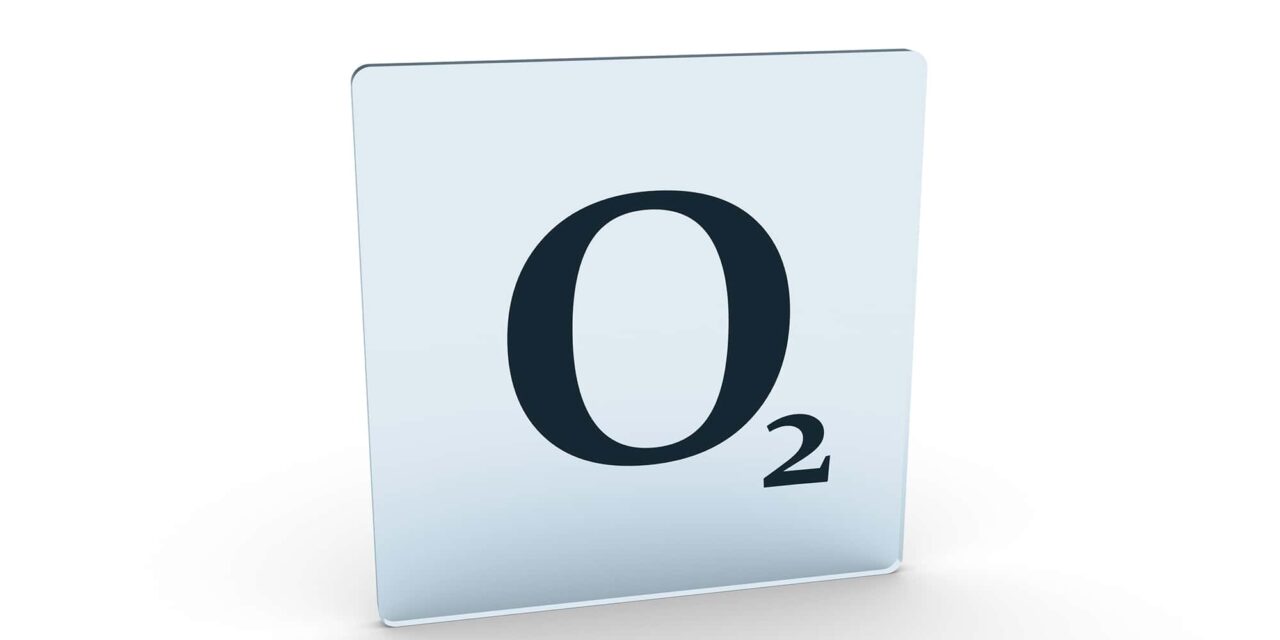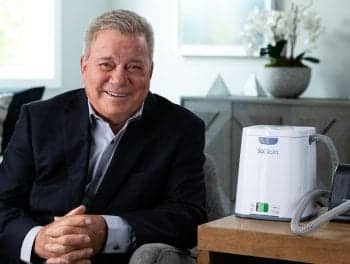As COPD progresses, a combination of pathological changes occur in the lungs which necessitate oxygen therapy, which may be delivered in both the acute care and home care settings.
By Bill Pruitt, MBA, RRT, CPFT, FAARC
Published: November 15, 2022
COPD is defined by the 2022 Global Initiative for Chronic Obstructive Lung Disease report (GOLD 2022) as “a common, preventable, and treatable disease that is due to airway and/or alveolar abnormalities usually caused by significant exposure to noxious particles and gases.”1 Tobacco smoking is the main risk factor.
As COPD progresses, a combination of pathological changes occur in the lungs which includes damage to the alveoli, retained secretions clogging the airways, reduced airflow, inflammation that reduces airway diameter, retention of carbon dioxide (CO2), reduced blood oxygen levels, air trapping, and premature collapse of the airways. Oxygen therapy is needed to treat hypoxemia and may be delivered in both the acute care and home care settings. This article will explore eight considerations in oxygen therapy for COPD patients.

1. Establishing the Need and the Amount to Administer
Oxygen therapy is needed when hypoxemia is present. In the acute care setting criteria, many use a SpO2 of 90% as a threshold for starting oxygen therapy. In the home care setting, the Medicare guidelines have several situations which justify oxygen therapy. An arterial blood gas showing a PaO2 <55 mm Hg and SaO2 < 88% is the first and primary case. Other conditions such as edema in lower extremities, ECG changes, polycythemia, and drops in blood oxygen during sleep or when exercising allow for little higher PaO2 and SaO2 to qualify for O2 therapy (see Table 1 for more details).1,2
Most COPD patients will start on low flow oxygen therapy via a nasal cannula at flow rates sufficient to being the oxygen levels up to a minimum SpO2 of 88 – 90%. For many this calls for 1 to 3 or 4 liters per minute flow. The actual delivered FIO2 via a cannula is not known and can vary as the patient changes inspiratory flow and inspiratory volume. In cases where a controlled FIO2 is needed, an air-entrainment mask (venti-mask) using a set FIO2 of 24% or 28% will be used. If hypoxemia persists in the acute care setting, higher flows and higher FIO2 settings with other devices may be utilized, but with certain COPD patients, there are risks involved with moving into the higher settings (more on this later).
Once oxygen therapy is initiated, the patient’s blood oxygen levels should be monitored and the therapy needs to be titrated down to lower oxygen flow rates and lower FiO2 levels as tolerated. This may also involve switching from one device to another (i.e. from an air entrainment mask to a cannula). Patients with severe resting chronic hypoxemia have improved survival rates when long-term oxygen therapy (LTOT) is used. LTOT is defined as >15 hours/day use of oxygen.1
2. Risks in Providing Oxygen Therapy to COPD Patients
Two hypothesis explain the problem of increasing CO2 that is sometimes encountered while providing oxygen therapy in COPD. The first hypothesis relates to respiratory drive. Increased CO2 levels in the blood provide trigger the brain to send the signal to the pulmonary system for breathing. Over time, COPD patients may begin to retain CO2 and in some patients, this rising level blunts the brain’s CO2 response – the brain essentially learns to tolerate higher CO2. As one author puts it, the brain responds to this problem by adopting a policy of “‘can’t breathe, so won’t breathe,” or “say-uncle.” 3 The brain then shifts to the back-up trigger for breathing – namely decreasing blood oxygen levels. If too much supplemental oxygen is given to the patients who are relying on blood O2 to trigger breathing, the need to breath is reduced resulting in high levels of CO2.
The second hypothesis is related to changes in V/Q with supplemental oxygen. Hypoxemia causes pulmonary vasoconstriction to reduce blood flow in areas of low (or ineffective) alveolar ventilation (including malfunctioning alveoli) to areas that have more normal ventilation. The pulmonary vasculature opens in response to relief from hypoxemia by oxygen therapy while ventilation stays the same due to the limitations of the lung in the face of COPD alterations. With this V/Q change –the end result is an increase in dead space ventilation and increasing blood CO2 levels.4 In light of this problem with hypercarbia (higher CO2), these patients need to have carefully controlled FiO2 close monitoring to aim for target saturation of 88-92%.1,4 With either hypothesis, too much oxygen can cause increased hypercarbia.
3. Long-term Oxygen Therapy (LTOT)
The need for LTOT is proven by arterial blood gases (best option) or reliable, verified pulse oximetry that shows hypoxemia. Once the need has been established and therapy has started, the patient should be re-evaluated by ABG or oximetry after 60 to 90 days to assure that supplemental oxygen is still needed and that the prescription is effective in treating hypoxemia.1 A study published in 2001 from New Zealand found that over a third of the patients started on LTOT did not need to continue the therapy when checked two months later.5
In another study from 2008, the researchers found that a third of patients with severe COPD were prescribed home oxygen despite having no resting hypoxemia and that these patients ended up with a higher mortality than those who did not receive oxygen.2,6 (Devices used for supply and delivery of O2 therapy will be covered later.) Before starting LTOT, patients should have stopped smoking since any open flame near oxygen supplies increases the risk of fire. Patients also need be instructed about safety issues related to other sources of open flames such as a gas stove, fireplace, etc, and instructed on reducing the fall risk from LTOT (ie tripping on supply tubing). 5,6
4. Nocturnal Considerations
For COPD patients with LTOT, assessment of oxygen levels during sleep may show that despite receiving the prescribed oxygen, nocturnal desaturations may occur. Often the primary care provider will instruct the patient to increase their oxygen flow rate by 1 LPM during sleep to help avoid nocturnal desaturation.2,8
As noted in Table 1, Medicare guidelines provide some consideration for desaturations during sleep. The problem with nocturnal desaturation may be even more an issue if the patient has any problems with sleep disordered breathing such as obstructive sleep apnea (OSA) or hypopnea. These conditions should be treated in addition to issues with hypoxemia.
Table 1 Criteria to Qualify for Medicare coverage for Home Oxygen Therapy2,7
Medicare will provide coverage for home O2 therapy if the patient is in one of the following four groups:
- Resting PaO2 < 55 mm Hg (or SaO2 < 88%)
- Resting or exercise PaO2 < 59 mm Hg (or SaO2 < 89%) with any of the following:
- Edema in lower extremities
- ECG shows P pulmonale (P wave >3 mm in lead II, III, or AVF)
- Polycythemia (hematocrit > 56%)
- Exertion causes drop in oxygen PaO2 < 55 mm Hg (or SaO2 < 88%) and documented improvement using oxygen in exertion
- If the patient’s oxygen level is acceptable when awake (PaO2 > 56 mm Hg (or SaO2 > 89%) and while asleep any of the following occurs:
- PaO2 < 55 mm Hg (or SaO2 < 88%) for at least 5 minutes or
- PaO2 drops > 10 mm Hg from baseline or SaO2 drops >5% from baseline or at least 5 minutes and signs or symptoms of hypoxemia occur
- PaO2 < 59 mm Hg (or SaO2 < 89%) for at least 5 minutes along with any of the following
- Edema in lower extremities
- ECG shows P pulmonale (P wave >3 mm in lead II, III, or AVF)
- Polycythemia (hematocrit > 56%)
- PaO2 < 55 mm Hg (or SaO2 < 88%) for at least 5 minutes or
5. Exercise
Oxygen consumption increases during exercise and supplemental oxygen may increase exercise capacity in COPD patients who desaturate to <88% or in COPD patients who do not desaturate but have dyspnea and ventilatory abnormalities during exercise. 8, 9 If a patient does not need oxygen at rest but needs it during exercise (including walking), the SpO2 should be documented on room air during rest, on room air with exercise, and while receiving oxygen during exercise to determine the prescription for ‘’ambulatory oxygen.” 8
6. Air Travel
Commercial airlines usually reach a cruising altitude of around 30,000 feet above sea level and pressurize the cabin to the equivalent of about 8,000 feet (comparable to breathing a room air FiO2 of 15% instead of 21%).6 For COPD patients, the low cabin pressurize may cause hypoxemia due to the low barometric pressure. Patients with a resting SpO2 < 92% should be given supplemental oxygen during air travel.7 The Federal Aviation Administration (FAA) has a list of some 21 portable oxygen concentrators (POC) that are approve for flying. (See the FAA website reference 9).
7. Devices for Oxygen Delivery
Many COPD patients can successfully receive O2 therapy via nasal cannula. However, there are several other delivery devices available, and depending on the acuity of the patient, several devices may be used to supply the right amount of oxygen with acceptable, appropriate inspiratory flow rates and FiO2. See Table 2 for a list of the most often used delivery devices. Low flow delivery devices are devices that do not meet or exceed the patient’s inspiratory flow. With these devices, the patient entrains room air along with the supplemental oxygen and the FiO2 is variable. High flow delivery devices exceed the patient’s inspiratory flow and have a known, fixed FiO2.
Table 2. Oxygen Delivery Devices for COPD Patients10-11
| Low flow delivery devices | O2 Flow rate (LPM) | Approximate FiO2 | |
| Nasal cannula | 1-6 | 0.24-0.44 | |
| Simple face mask | 5-8 | 0.40-0.60 | |
| Partial rebreathing mask | 6-10 | 0.60-0.80 | |
| Non rebreathing mask | 10-15 | 0.90-1.00 | |
| High flow delivery devices | O2 Flow rate (LPM) | Approximate FiO2 | Delivered flow (LPM) |
| Venturi mask | 2-15 | 0.24-0.60 | 40-60 |
| High flow nasal cannula | set by blender | 0.21-1.00 | 20-60 |
8. Devices for O2 supply
Oxygen in the acute care setting is usually delivered through the O2 piping system with the supply being a bulk liquid oxygen container located outside the hospital and refilled by a gas supply company via tanker truck. In the home care setting, oxygen may be supplied by cylinders, liquid oxygen, concentrators, or portable oxygen concentrators (POC).2 Concentrators and POCs are the most often utilized devices and the home may have cylinders as a back-up to supply oxygen during a loss of electrical power.
The newest devices on the market are the POCs which allow for easier mobility in ambulatory patients as they are small, lightweight, and capable of operating on a battery power supply. Concentrators can provide oxygen flow rates from 1 to 10 LPM with an oxygen purity of 90 +5%.2 Pulse-dose delivery systems that provide a burst of oxygen or an intermittent flow can be added to supply devices to maximize efficacy and use of electrical power (ie, battery).
Conclusion
Oxygen therapy for COPD patients extends life, allows for more exercise capacity, reduces hypoxemia, and improves quality of life. Supplemental oxygen should be prescribed with care and with specific details included to ensure safe, effective therapy. Particular circumstances such as exercise, travel, and night-time situations should be considered and instructions provided to the supplier and patient to cover these circumstances (if appropriate). Respiratory therapists should be knowledgeable about all aspects of oxygen therapy and included in all venues, from the acute care to the home setting, to help ensure the patient is provided the best of care.
RT
Bill Pruitt, MBA, RRT, CPFT, FAARC, is a writer, lecturer, and consultant. He has over 40 years of experience in respiratory care, and has over 20 years teaching at the University of South Alabama in Cardiorespiratory Care. Now retired from teaching, he continues to provide guest lectures and write.
References
- From the 2022 Global Initiative for Chronic Obstructive Lung Disease website. https://goldcopd.org/2022-gold-reports-2/. Accessed 10/28/2022.
- Branson RD. Oxygen therapy in COPD. Respiratory care. 2018 Jun 1;63(6):734-48
- Poon CS, Tin C, Song G. Submissive hypercapnia: Why COPD patients are more prone to CO2 retention than heart failure patients. Respiratory physiology & neurobiology. 2015 Sep 15;216:86-93.
- Abdo WF, Heunks L. Oxygen-induced hypercapnia in COPD: myths and facts. Critical Care. 2012 Oct;16(5):1-4.
- McDonald CF. Home oxygen therapy. Australian Prescriber. 2022 Feb;45(1):21.
- Drummond MB, Blackford AL, Benditt JO, Make BJ, Sciurba FC, et al. Continuous oxygen use in non-hypoxemic emphysema patients identifies a high-risk subset of patients: retrospective analysis of the National Emphysema Treatment Trial. Chest 2008;134(3):497-506.
- Currie GP, Douglas JG. Oxygen and inhalers. BMJ. 2006 Jul 1;333(7557):34-6.
- Carter, R. Long-term supplemental oxygen therapy. From the UpToDate website. https://www.uptodate.com/contents/long-term-supplemental-oxygen-therapy. Updated 10/12/2022. Accessed 10/28/2022.
- Khor YH, Dudley KA, Herman D, Jacobs SS, Lederer DJ, Krishnan JA, Holland AE, Ruminjo JK, Thomson CC. Summary for clinicians: clinical practice guideline on home oxygen therapy for adults with chronic lung disease. Annals of the American Thoracic Society. 2021 Sep;18(9):1444-9.
- FAA-approved POC. https://www.faa.gov/hazmat/packsafe/more_info/?hazmat=21. Accessed 11/2/2022.
- Batool S, Garg R. Appropriate use of oxygen delivery devices. The Open Anesthesia Journal. 2017 Jul 31;11(1).
- Heuer A. Medical Gas Therapy (Ch 41) in Kacmarek R, Stoller J, Heurer A. Egan’s Fundamentals of Respiratory Care (11th ed). Elsevier St. Louis, MO. 2017










